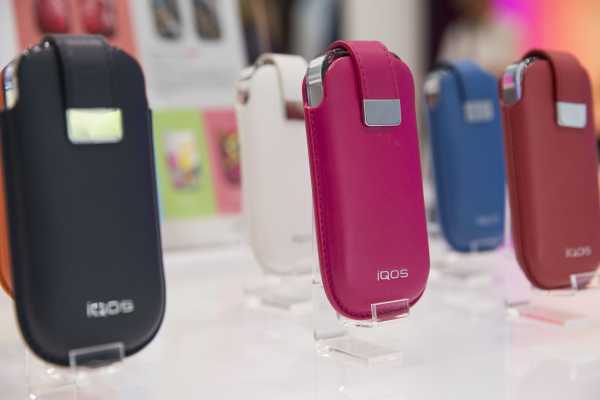
The tobacco giant Philip Morris is hoping to sell Americans on a new way to puff on tobacco. It’s not an e-cigarette; rather, it’s a “heat not burn” smokeless tobacco device called IQOS that’s already available in 29 countries.
IQOS, which is pen-shaped and comes with an iPod-like recharger, vaporizes mini tobacco sticks by heating them. Philip Morris claims this cuts users’ exposure to the carcinogens created when tobacco is burned, and that it could save the lives of smokers. Critics worry the slick packaging and marketing around IQOS seems more geared toward grabbing the attention of youth than helping wean longtime smokers off cigarettes.
This week, an independent panel of experts at the Food and Drug Administration is discussing IQOS’s potential health impact, and whether Philip Morris’s claims are backed by scientific data. By the end of Thursday, the panel is expected to vote on how IQOS (pronounced “eye-kose”) should be marketed in the US, where the company says it could help 6 million smokers quit. The FDA may or may not follow the panel’s advice.
Whatever the outcome of the meeting, however, the panel’s decision is being viewed as a test case for the growing market of cigarette alternatives. If the panel looks favorably upon IQOS, and FDA takes its recommendation (it usually does), the device would be the first tobacco product marketed under a “modified risk” claim in the US.
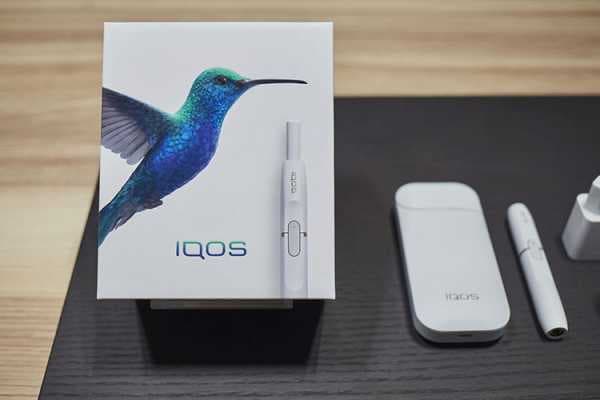

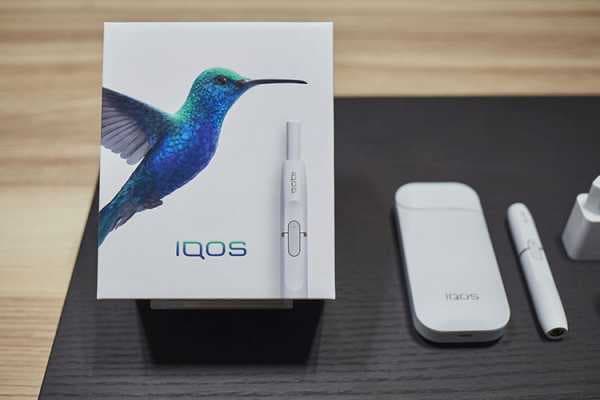
FDA Commissioner Scott Gottlieb has already indicated that he wants to drive down smoking rates by making traditional cigarettes less addictive with nicotine limits, and by offering US consumers safer alternatives to smoking.
An IQOS FDA approval would “send a strong signal to consumers that these products are likely to be less harmful for them to use,” said University of Waterloo public health researcher David Hammond, “and in practice, that will serve as an endorsement.”
But even more than that, Michael Eriksen, dean of the school of public health at Georgia State University and a former director of the Centers for Disease Control and Prevention’s Office on Smoking and Health, called the decision “historic.”
“This could be the beginning of the end of smoking as we know it,” Eriksen said.
It may look like an e-cigarette, but IQOS is different
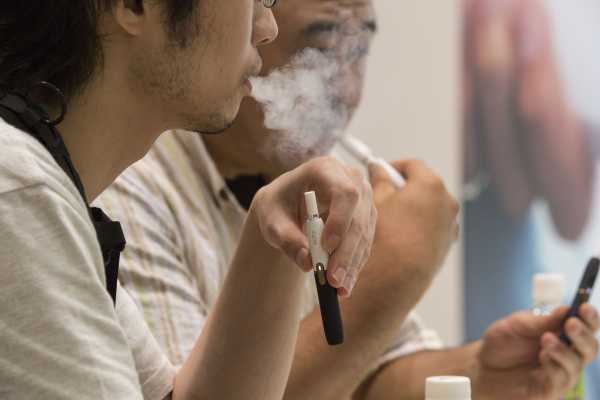

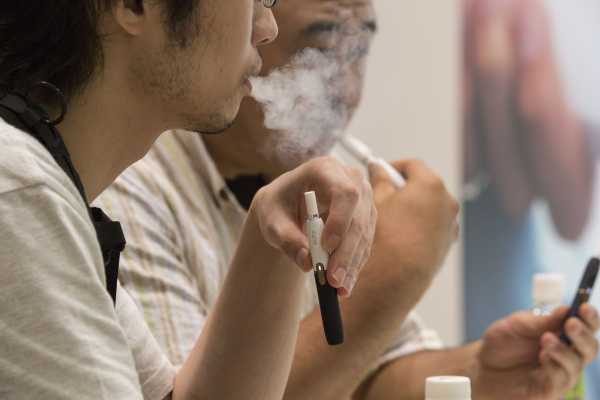
The first thing to know about IQOS is that it’s not an e-cigarette — even though it looks like one.
E-cigarettes are slender, battery-powered devices that vaporize a liquid, which contains nicotine, to imitate conventional smoking. When a user inhales from an e-cigarette’s mouthpiece, the device powers up and then vaporizes liquid nicotine, which is located in an insertable cartridge.
IQOS is also a slender, battery-powered device, but instead of vaporizing nicotine-containing liquid, it vaporizes actual tobacco. That’s why it’s part of a distinct tobacco product category called “heat not burn” devices: IQOS heats but doesn’t burn tobacco.
The system has three main components: a Marlboro-branded tobacco unit (which looks like a mini cigarette), the IQOS holder (which looks like an e-cigarette), and a charger (which looks like an iPod). Users push the tobacco unit into the IQOS holder, press a button to activate a battery-powered heater, and then puff away on nicotine-containing vapor. According to the IQOS website, it provides “the real taste of heated tobacco” and lasts for six minutes or 14 puffs.
When finished, the tobacco unit gets tossed away, and the device can be recharged whenever necessary.
The big selling point of these products — and the reason Philip Morris is seeking FDA approval to market them as safer than cigarettes — is that they’re smokeless.
Cigarettes burn tobacco at temperatures of 600°C, but IQOS heats tobacco at up to 350°C. The company says the devices give smokers the same dose of nicotine as conventional cigarettes, with a similar tobacco flavor profile, but again, without the combustion.
“When you light something on fire and you get smoke, you get a lot of the carcinogens and toxicants that are coming from the combustion,” said Waterloo’s Hammond. “The idea is that [heat-not-burn devices] will have fewer harmful chemicals than regular cigarettes.”
Philip Morris claims IQOS could save 90,000 lives over 20 years
The FDA and its expert review panel have been poring over millions of pages (literally) of scientific data provided by Philip Morris. (Here’s FDA’s 75-page summary of the data). They need to determine whether the Philip Morris evidence supports the marketing claims the company would like to make about IQOS, which include:
- IQOS “significantly reduces the production of harmful and potentially harmful chemicals.”
- “Switching completely to IQOS presents less risk of harm than continuing to smoke cigarettes.”
- “Scientific studies have shown that switching completely from cigarettes to the IQOS system significantly reduces your body’s exposure to harmful or potentially harmful chemicals.”
Philip Morris also has a separate application, making its way through the FDA, to simply sell the product in the US.
In its supporting materials and testimony before the FDA panel, the company has said that the device produces up to 95 percent less harmful chemicals than regular cigarettes. The company estimates that if IQOS were introduced in the US, around 6 million smokers (or 15 percent of daily smokers in the US) would switch to IQOS, and that over 20 years, that would save 90,000 lives. (On the question of nicotine, while it’s an addictive chemical, its relative harms compared to cigarette smoking are minor — outside of the context of pregnancy — which is why public health officials have called for safer nicotine delivery systems.)
Philip Morris is also highlighting its experience in Japan — one of the countries where IQOS was first introduced — as an example of the impact the product could have. It claims 72 percent of IQOS users quit smoking, and that the device has taken over one-tenth of Japan’s tobacco market.
While these figures are staggering, Japan’s tobacco market is very different from America’s, and it’s not clear that the US experience would be similar, Hammond said. But it’s up to the FDA to decide whether the potential benefits of IQOS outweigh its potential harms.
“Philip Morris estimates they will save 90,000 lives [over 20 years],” Eriksen added. “That’s great. But during that same period, we estimate that 10 million people will die of smoking. So selling IQOS in the US isn’t going to solve the problem.”
The FDA approval could change the cigarette market in the US — but it won’t solve the smoking problem
If the US joins the club of 29 countries where IQOS is already being sold, it could mean a sea change in the status quo around smoking in this country: IQOS would be the first FDA-approved tobacco product that’s allowed to be marketed to Americans as safer than cigarettes. If products like IQOS do what their makers and proponents claim they will — help smokers quit — they could save thousands of lives each year.
But, Eriksen pointed out, “We won’t know that right away, and what consumers decide to do is the story yet to be written.” And that’s the question mark at the center of the public health debate over e-cigarettes, heat-not-burn devices like IQOS, and other cigarette alternatives.
E-cigarettes are already available in the US, but they’re not yet FDA-approved since the FDA only recently gained authority to regulate them, and companies only need to comply with FDA regulations by 2022. Again, IQOS is considered a cigarette product, not an e-cigarette, which is why it needs to pass the regulatory hurdle before it can be sold here.
While a consensus has emerged among public health authorities that e-cigarettes and other cigarette alternatives are less harmful than conventional smoking for individual smokers, their long-term health consequences are still unknown, as is their impact on the population at large. For example, these devices may save the lives of smokers but also entice more young people to use them — or even to smoke — at a time when smoking rates have been declining. The devices’ long-term health consequences are also unknown, and most people who currently use e-cigarettes continue to smoke. It’s not clear IQOS will be any different.
No matter what happens, the outcome of the meeting will be controversial.
“The tobacco companies — who in many ways were the vector that caused the problem — are now coming up with alternatives that may or may not be helpful but need to be evaluated or regulated,” Eriksen said.
There are other things about IQOS that make people uncomfortable. The sleek, tech-forward design of the devices extends to the whitewashed IQOS stores, lounges, and cafes that have been popping up around the world.
“The way we [used methadone] for harm reduction with drug addicts was to control would get it, and the products were not made to be particularly attractive,” said Kenneth Michael Cummings, co-leader of the Medical University of South Carolina’s tobacco research program. “And that has people concerned with the way we see IQOS is being marketed.” He added that the product seemed more targeted toward youth interested in technology than, for example, 70-year-old cancer patients who don’t even know how to use their iPhones.
The marketing and appealing packaging has also raised questions about what these products will do to youth nicotine use and smoking rates.
Matt Myers, president of the Campaign for Tobacco-Free Kids, said he was also concerned by the slickness of the marketing around IQOS, and that the devices seem to be designed to specifically target young people. “They not only look like little iPods, they are named IQOS. There is a significant risk that unless the marketing is very carefully circumscribed, they will become the next trend and the next fad.”
Even those who are open-minded about IQOS don’t think it’ll solve America’s tobacco problem.
“Tobacco companies have been bringing out so-called harm reduction products for 60, 70 years,” Waterloo’s Hammond added. “Filtered cigarettes, light tar, different versions of these heated products. These [new devices] are going to have no impact or distract people unless they actually pull consumers away from smoking cigarettes.”
The FDA should work to make smoking less attractive, less appealing, and harder to do, in parallel with offering these cigarette alternatives, Eriksen said. The agency needs to start doing this sooner rather than later. “One product — whether it’s IQOS or e-cigarettes — is not going to fix [tobacco’s health problems].”
Meanwhile, smoking is still linked to one in five deaths in the US, and there’s a pressing need for products that’ll actually wean them off cigarettes. “The US is going to have half a million people die from cigarettes this year alone, and 30 times that number sick with smoking-related diseases,” said Cummings. “There is an urgency.”
This tension between helping smokers while minimizing harm to public health is a big reason why health and regulatory agencies have been hamstrung over how to regulate products like IQOS. It’s also why today’s decision about IQOS is one to watch.
Sourse: vox.com






